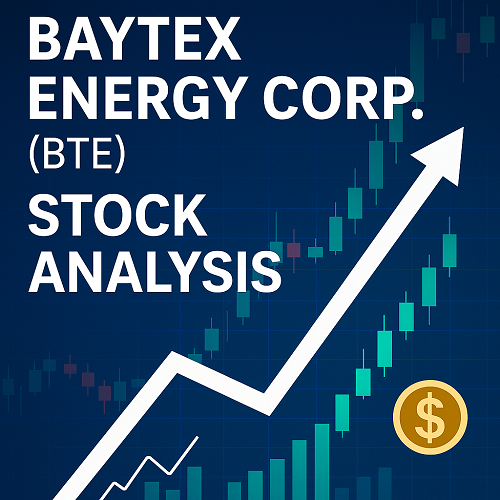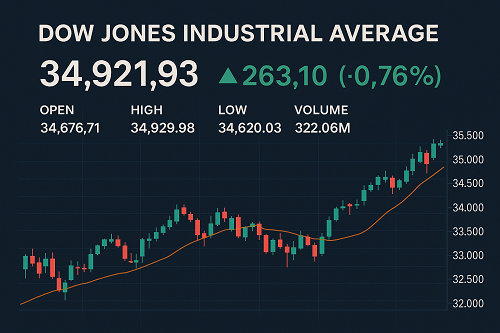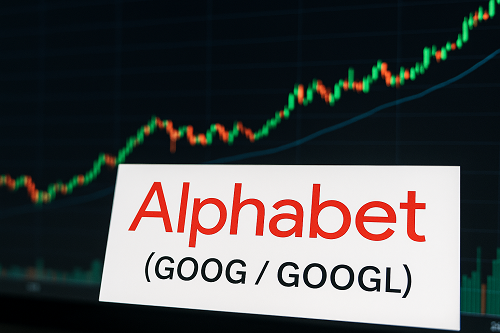Who is Baytex Energy?
Baytex Energy Corp. (TSX: BTE; NYSE: BTE) is a Canadian-based oil & gas exploration and production (“E&P”) company headquartered in Calgary, Alberta.
Founded in 1993, the company focuses on crude oil and natural gas production in the Western Canadian Sedimentary Basin and the U.S. Eagle Ford shale region. For those interested in investing, bte stock on the TSX is something to consider.
Its asset portfolio includes heavy oil, light oil, natural gas liquids (NGLs) and natural gas across Canada and the U.S.
Business Model & Revenue Streams
Baytex generates revenue through upstream operations: acquiring acreage and producing oil & gas, then selling the production either into local Canadian markets or into U.S. markets (especially via Eagle Ford).
Costs involved include drilling, completion, production operations, transportation, royalties, taxes and debt servicing.
In recent years, Baytex has emphasised:
- Improving portfolio quality by growing light-oil output (higher value) rather than just heavy oil
- Reducing debt, controlling capex and improving free cash flow
- Paying a modest dividend to shareholders
Asset Base & Key Operating Regions
- Canada: heavy oil in the Western Canadian Sedimentary Basin; light oil assets (e.g., Pembina, Duvernay).
- U.S.: Eagle Ford shale in Texas, a light-oil corridor – giving Baytex exposure to higher value liquids production.
This diversified geographic footprint gives Baytex some resilience (Canada + U.S.), though the company remains sensitive to commodity prices, currency movements (CAD vs USD), and regulatory / royalty regime shifts.
Industry Landscape & Competitive Positioning
Oil & Gas E&P Sector at a Glance
The upstream oil & gas industry is cyclical, driven by commodity (oil & gas) prices, supply-demand dynamics, geopolitics and regulatory factors (e.g., environmental regulation, carbon pricing).
Key themes for E&P players include: cost control, portfolio optimisation (focusing on higher-returns assets), free cash flow generation, and returning capital to shareholders (via dividends or buybacks).
In the Canadian context, E&P companies also face additional challenges: heavy oil discount differentials, pipeline constraints, royalty regimes and stronger regulatory scrutiny.
Baytex’s Positioning Relative to Peers
Baytex distinguishes itself by:
- A meaningful exposure to light oil (via Eagle Ford + Duvernay) which tends to yield higher margins than traditional heavy oil.
- A relatively lean balance sheet and focus on debt reduction: recent disclosures highlight free cash flow focus.
However, compared to larger Canadian E&P peers (e.g., Cenovus Energy Inc., Tourmaline Oil Corp.) Baytex is smaller in scale, so it may be more vulnerable to commodity swings or economy of scale disadvantages.
SWOT Snapshot
Strengths:
- Exposure to both Canada & U.S. (diversification)
- Growing light-oil production which can yield higher value
- Focus on free cash flow and debt control
Weaknesses:
- Smaller scale relative to major players
- Heavy oil exposure still present (lower margin)
- Sensitive to commodity price volatility
Opportunities:
- Further unlocking of Duvernay light-oil wells
- Potential monetisation of non-core assets (e.g., U.S. assets) to sharpen focus
- Improving commodity price back‐drop and narrowing of differentials
Threats:
- Prolonged low oil or gas prices reducing margins
- Regulatory / royalty headwinds in Canada (carbon pricing, provincial royalty changes)
- Strong Canadian dollar (if production costs in CAD while commodities in USD)
- Execution risk or cost overruns in drilling programmes
Recent Financial Results & Key Metrics
Latest Results Highlights
From the Q3 2025 report (as of ~October 2025) Baytex showed:
- Revenue for Q3 2025 of approximately CAD 872.9 m (or similar).
- Net income for the period ~ CAD 30.9 m.
- The company noted record production in the Pembina Duvernay region and improving free cash flow.
- Market cap circa CAD 2.57 b as of recent.
Valuation and Financial Ratios
Key metrics as per recent data:
- P/E (Trailing) ~ 11.9x.
- Dividend yield around ~2.7%.
- Debt-to-equity around ~48% (as per one recent snapshot) which is moderate for the industry.
- 52-week price range (Toronto listing) CAD 1.91 – CAD 4.44.
Historical Performance & Trends
- The company has demonstrated meaningful growth in its light oil assets (Duvernay) which could help future margin expansion.
- Share price has been volatile, reflecting commodity swings and investor sentiment in the E&P sector. For example, recent YTD return in Canada ~ +2.88% while TSX composite at ~22%.
- Online discussion forums show high engagement and speculative commentary (e.g., push to $5).
Strategic Growth Drivers
Light Oil & Duvernay Expansion
Baytex’s ramp in Duvernay light-oil production is a major potential growth driver. Analysts highlight strong early production results and cost reductions in this area.
Light oil carries a pricing advantage over heavy oil (less discount) and thus offers margin upside.
Format of Portfolio Optimisation
The company appears to consider monetising non-core or underperforming assets to sharpen focus. One report indicates Baytex may sell U.S. Eagle Ford assets (~US$3 b) to concentrate on domestic (Canada) operations.
If executed well, this could generate cash for debt repayment, reinvestment or shareholder returns.
Debt Reduction & Free Cash Flow Focus
Operating in a capital-intensive industry, Baytex emphasises disciplined capex, improving operational efficiencies, lowering cost per barrel, and generating free cash flow, even at lower commodity prices.
This is particularly meaningful given the volatility of oil/gas prices.
4.4 Dividend & Shareholder Return Policy
While the dividend is modest (approx. ~2.7%), it signals shareholder discipline.
If cash flows improve further, there could be upside in buybacks or increased dividends.
Risks & Headwinds
Commodity Price Risk
As with all E&P companies, Baytex is highly exposed to crude oil and natural gas prices. Prolonged weakness in oil will reduce margins, free cash flow and could force production cutbacks.
Worse still, heavy oil discounts still present in Canada weigh on returns.
Heavy Oil Exposure & Discount Risk
While Baytex is increasing light oil exposure, a portion of its portfolio remains heavy oil. Heavy oil typically sells at a discount to benchmark light crude due to transportation and quality differentials.
Canadian Regulatory and Royalties Environment
Canadian producers face specific risks: provincial royalty changes, carbon taxes, pipeline constraints, environmental regulation—all may raise costs or constrain growth.
For example, constrained takeaway capacity can widen differentials and depress realized prices.
Execution and Asset Monetisation Risk
The planned or potential sale of U.S. assets (Eagle Ford) must be executed well. Failure or distractive execution could hamper growth.
Also, cost overruns, poorer than expected well productivity or operational delays (especially the Duvernay expansion) are risks.
Currency & Inflation Risks
Given operations in Canada and U.S., currency movements (CAD vs USD) and inflation in cost inputs (labour, services) can affect margins.
Valuation and Stock Outlook
Valuation Summary
Based on recent data (Toronto listing):
- P/E around 11.9x.
- Dividend yield around ~2.7%.
- Market cap ~CAD 2.57 b.
Given the cyclical nature of the industry and Baytex’s growth opportunities, the valuation appears moderate and offers some potential upside, assuming favourable commodities and execution.
Analyst Sentiment
Analyst commentary is mixed to cautiously positive: While Baytex has delivered strong production results, some analysts caution the high volatility and industry headwinds.
Some investor forums express bullish sentiment (calling for higher price targets, e.g., > $5), but that is speculative and would require significant positive catalysts.
Potential Catalysts
- Continued ramp-up of Duvernay light-oil production and margin improvement
- Sale of U.S. non-core assets and redeployment of proceeds
- Oil price recovery from current levels
- Narrowing heavy oil differential (improved takeaway capacity)
- Free cash flow growth enabling higher dividend/share repurchase
Bear Cases / What Could Go Wrong
- A sustained drop in oil prices into the US$50/barrel or lower range
- Heavy oil differential widening further
- Cost inflation or operational issues at key sites (Duvernay/Eagle Ford)
- Regulatory setbacks or adverse tax/royalty changes in Canada
- Failure to achieve asset monetisation objectives
Price Target Scenarios
- Base case: Assuming stable oil price environment, continued production growth and moderate differential improvement – the stock could trade into the ~15-18x P/E range, implying upside from current levels.
- Bull case: Oil price rebound, faster production ramp, successful asset sale – could push multiple up, stock could reach CAD 4-5 (or higher) based on forum speculation.
- Bear case: Weak commodity environment, heavy oil differential remains wide, operational setbacks – stock could drift lower toward CAD 1.50-2.00 territory.
Conclusion – Is BTE a Buy in 2025?
In summary: Baytex Energy presents an interesting mid-cap oil & gas producer with meaningful exposure to light-oil growth, a focus on free cash flow and debt reduction, and a valuation that is not overly demanding. That said, it remains highly cyclical and exposed to commodity risk, heavy-oil discounts and execution risk.
If you are a value-oriented investor willing to accept commodity cyclicality and believe oil prices will rebound (or heavy oil differentials will improve), BTE offers decent upside potential with modest downside protection (given its moderate valuation).
However, if you are risk-averse, dislike volatility, or are sceptical about near-term oil price recovery, Baytex may be too speculative.
Ultimately, whether BTE is a buy depends on your outlook for oil markets, your time-horizon (mid/long term rather than short term) and your willingness to tolerate the upstream E&P sector’s swings.
Frequently Asked Questions (FAQ)
Q1: What is Baytex Energy’s dividend yield?
Around ~2.7% based on current info.
Q2: Is Baytex more heavy oil or light oil?
The company has exposure to both heavy oil (Canada) and light oil (Canada + U.S.), but it is increasingly emphasising light oil growth (Duvernay, Eagle Ford) which has higher margin potential.
Q3: What are the largest risks for Baytex?
Commodity price drop, heavy oil differential widening, regulatory/royalty changes, cost inflation and execution risk. (See Section 5)
Q4: What about Baytex’s debt level?
Debt-to-equity is moderate (around ~48% in one snapshot) – manageable for the industry but still sensitive to cash flows.





 XAUT-USD
XAUT-USD  AMD
AMD  MARA
MARA  SHOP
SHOP  BULL
BULL  CL=F
CL=F